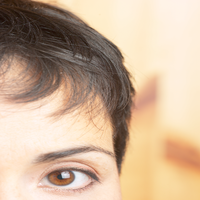A Memory for Faces

Your humble reporter has always had a good memory for faces. A month after a meeting in San Antonio at which we had about 250 attendees, he was in another part of the country when a charming man came over to say, “You won’t remember me, but I was at your lecture in Texas last month.”
He looked like a man who’d eaten a raw egg when he got the response, “Oh yes, fifth row from the back, fourth person along.”
It would be great if that memory for faces could be linked to a memory for names or something else useful. But sad to say it isn’t. Just the face, and when and where it was last seen.
But new research in neuroscience has shown us ways to tether other memories to each other.
So it was interesting to see a new report of some fascinating research from Vanderbilt University in Nashville suggesting that it is common for us to be better able to remember faces than other objects and in addition that faces “stick” the best in our short-term memory. The reason may be that our expertise in remembering faces allows us to package them better for memory, since faces are complex and their recognition is also essential for normal social relationships.
The findings are currently in press at the journal Psychonomic Bulletin and Review.
The key component of the research is visual short-term memory or VSTM has a unique way of being coded in the brain. The findings have practical implications for the way we use our memories. Clearly being able to store more faces in VSTM may be very useful in complex social situations. Just think for a moment how much most people like being remembered, particularly if you can attach a name and salient fact to the memory. Most of the successful business people and politicians that I know are remarkably adept at doing this.
Short-term memory is crucial to the way in which we create impressions and adapt to a continuously changing world. It serves as temporary storage for information that we are currently using: rather like the RAM on a computer. For example, in order to understand this sentence, your short-term memory will need to remember the words at the beginning while you read through to the end. People with some neurological and attentional problems have a real problem with doing that. VSTM is a component of short-term memory that helps us process and briefly remember images and objects, rather than words and sounds.
VSTM allows us to remember objects for a few seconds, but as with working memory and all the short-term memory stores, its capacity is limited. The new research focuses on whether we can store more faces than other objects in VSTM and the possible mechanisms underlying this advantage.
Study participants were asked to look at up to five faces on a screen for varying lengths of time (up to four seconds). A single face was later presented and the subjects had to decide if this face was part of the original display. For a comparison, the process was repeated with other objects, like watches or cars.
The researchers found that when participants studied the displays for only a brief amount of time (half a second), they could store fewer faces than objects in VSTM. They think that this is because faces are more complex than watches or cars and therefore they require more time to be encoded. Surprisingly, when participants were given more time to encode the images (four seconds), an advantage for faces over objects emerged.
The researchers believe that our past experience with learning faces explains this advantage. This theory is supported by the fact that the advantage was only observed if the faces were upright: the most familiar orientation. Faces that were shown – and therefore encoded – upside-down showed no advantage over other objects.
This is very similar to the situation in chess, where, compared with a novice, a master can instantly remember a position on the board if the pieces are in logical places. If they are arranged at random, the master does no better than the rank amateur.
Most of the textbooks tell us that the capacity of short-term memory is something is fixed, and that you either have a decent capacity or you do not. However the research indicates that you can learn to improve your capacity for this form of memory.
This makes sense: as a child your reporter rarely made notes and his parents supported him in that. More than one school teacher thought him lazy and inattentive because his note books consisted of doodles and random scribbles in between pages of homework.
How many other children have also been accused of cheating or faced punishment or ridicule simply because they had a good memory, but did not learn in the same way as the other kids?
We already have some methods for training people to get better at using visual memory, but most have been discovered by trial and error. This new research will make it that much easier to devise memory training methods rooted in brain science.
But also remember something else: sometimes forgetting is as important as remembering.
Elbert Hubbard, the American Editor, Publisher and Author who perished aboard the Lusitania in 1915, had this to say, “A retentive memory may be a good thing, but the ability to forget is the true token of greatness.”






